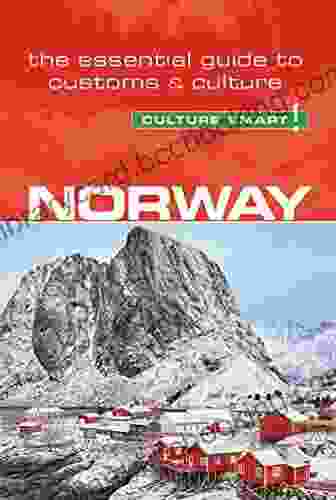Development and Stages of Pidgins and Creoles: Towards Decreolization

In the vibrant tapestry of human language, pidgins and creoles occupy a captivating niche. These dynamic 'contact languages' emerge in unique socio-historical contexts, serving as bridges between disparate linguistic communities. They hold a mirror to the complex interactions and transformations that shape human society and language.
4.7 out of 5
| Language | : | English |
| File size | : | 908 KB |
| Text-to-Speech | : | Enabled |
| Enhanced typesetting | : | Enabled |
| Print length | : | 24 pages |
| Screen Reader | : | Supported |
This article delves into the captivating world of pidgins and creoles, tracing their developmental journey from humble beginnings to their potential path towards 'decreolization.' We will explore the distinct stages they traverse, the factors influencing their evolution, and the profound implications for our understanding of language and its relationship with society.
Genesis of Pidgins
Pidgins arise in situations where individuals from different linguistic backgrounds need to communicate but lack a common tongue. They are often simplified, pragmatic languages devoid of complex grammatical structures or extensive vocabularies.
Imagine a bustling port city, where sailors, merchants, and laborers from diverse linguistic horizons converge. Out of this linguistic babel, a pidgin might emerge, cobbled together from elements of the various languages present. It serves as a rudimentary means of communication, allowing people to engage in basic transactions and exchange essential information.
Emergence of Creoles
When a pidgin becomes the primary language of a community, particularly among children, it undergoes a fascinating transformation. It gains complexity, acquiring a richer grammar and a more extensive vocabulary. This process gives rise to a 'creole,' a fully-fledged language in its own right.
Creoles are not merely simplified versions of their parent languages. They possess their own distinct grammatical structures, unique vocabularies, and even expressive nuances that reflect the cultural experiences of the community that uses them.
Stages of Pidgin and Creole Development
The journey from pidgin to creole is not always linear. Scholars have identified several stages that these languages typically pass through:
Incipient Pidgin
At this early stage, communication is highly context-dependent, with gestures, intonation, and shared knowledge compensating for the pidgin's limited vocabulary and grammar.
Expanded Pidgin
As the pidgin is used more frequently, its vocabulary and grammar expand. It becomes more stable and usable in a wider range of situations.
Pre-Creole
The pidgin begins to acquire features of a creole, such as a more complex grammar and the regularization of its sound system.
Stabilized Creole
The creole becomes a fully-fledged language with its own established grammar and vocabulary. It is used in all domains of life within the community.
Post-Creole Continuum
In some cases, the creole may continue to develop, merging with the surrounding languages and losing some of its distinctive features.
Factors Influencing Development
The evolution of pidgins and creoles is influenced by a myriad of factors, including:
Contact Context
The nature of the contact between different linguistic communities heavily influences the development of pidgins and creoles. Factors such as power dynamics, social distance, and the availability of other communication channels play a significant role.
Substrate Languages
The languages spoken by the individuals who initially create a pidgin contribute to its vocabulary and grammatical structure. These 'substrate languages' leave an imprint on the emerging language.
Superstrate Languages
When a creole comes into contact with more dominant languages, it may undergo a process of 'superstrate influence.' This can result in the adoption of vocabulary, grammar, and pronunciation features from the superstrate languages.
Community Dynamics
The social and cultural context in which a pidgin or creole is used shapes its development. Factors such as the size and stability of the community, its social stratification, and its relationship with other linguistic communities all play a role.
Decreolization: A Potential Path
In certain circumstances, creoles may embark on a path towards 'decreolization.' This process involves the gradual loss of creole features and the adoption of features from the surrounding languages.
Decreolization can occur when a creole-speaking community comes into close and sustained contact with the speakers of the lexifier language (i.e., the language from which most of the creole's vocabulary is derived). Over time, the creole may become more similar to the lexifier language, losing its distinctive characteristics.
Implications for Language and Society
The study of pidgins and creoles offers profound insights into the nature of language and its relationship with society. These languages challenge traditional notions of linguistic purity and highlight the dynamic and ever-changing nature of human communication.
Pidgins and creoles demonstrate the ability of language to adapt and evolve in response to changing social and communicative needs. They provide a glimpse into the processes by which new languages are born and the factors that shape their development.
The journey of pidgins and creoles is a captivating tale of linguistic evolution and socio-cultural transformation. From their humble origins as rudimentary contact languages to their potential path towards decreolization, these languages offer a unique perspective on the intricate interplay between language and society.
By exploring the development and stages of pidgins and creoles, we gain a deeper appreciation for the diversity and resilience of human language. These languages serve as a reminder of the adaptability and creativity of our species, and the profound ways in which language shapes our experiences and our understanding of the world.
4.7 out of 5
| Language | : | English |
| File size | : | 908 KB |
| Text-to-Speech | : | Enabled |
| Enhanced typesetting | : | Enabled |
| Print length | : | 24 pages |
| Screen Reader | : | Supported |
Do you want to contribute by writing guest posts on this blog?
Please contact us and send us a resume of previous articles that you have written.
 Book
Book Novel
Novel Page
Page Chapter
Chapter Text
Text Story
Story Genre
Genre Reader
Reader Library
Library Paperback
Paperback E-book
E-book Magazine
Magazine Newspaper
Newspaper Paragraph
Paragraph Sentence
Sentence Bookmark
Bookmark Shelf
Shelf Glossary
Glossary Bibliography
Bibliography Foreword
Foreword Preface
Preface Synopsis
Synopsis Annotation
Annotation Footnote
Footnote Manuscript
Manuscript Scroll
Scroll Codex
Codex Tome
Tome Bestseller
Bestseller Classics
Classics Library card
Library card Narrative
Narrative Biography
Biography Autobiography
Autobiography Memoir
Memoir Reference
Reference Encyclopedia
Encyclopedia Courtney Vowell Woodward
Courtney Vowell Woodward Clayton Geoffreys
Clayton Geoffreys Clara Ingram Judson
Clara Ingram Judson Dan Chapman
Dan Chapman Cliff Lerner
Cliff Lerner Dani Rodrik
Dani Rodrik Dan Flores
Dan Flores Colleen Craig
Colleen Craig Daniel Isberner
Daniel Isberner Clyde Fitch
Clyde Fitch Cyrus Ryan
Cyrus Ryan Dan Whitehead
Dan Whitehead D R Tara
D R Tara Cute Broidery Company
Cute Broidery Company Dale Marie Bryan
Dale Marie Bryan Dan Rafter
Dan Rafter Colin Fearn
Colin Fearn Damon B Akins
Damon B Akins Claire Keene
Claire Keene Clark Norton
Clark Norton
Light bulbAdvertise smarter! Our strategic ad space ensures maximum exposure. Reserve your spot today!

 Calvin FisherThe Essential Guide To Customs Culture: Unveiling the Rich Tapestry of Global...
Calvin FisherThe Essential Guide To Customs Culture: Unveiling the Rich Tapestry of Global... Jeffrey CoxFollow ·5.6k
Jeffrey CoxFollow ·5.6k Gavin MitchellFollow ·3.6k
Gavin MitchellFollow ·3.6k George MartinFollow ·4.1k
George MartinFollow ·4.1k Jackson HayesFollow ·12.8k
Jackson HayesFollow ·12.8k Vernon BlairFollow ·14.5k
Vernon BlairFollow ·14.5k Jerome PowellFollow ·6.5k
Jerome PowellFollow ·6.5k Diego BlairFollow ·19k
Diego BlairFollow ·19k William GoldingFollow ·13k
William GoldingFollow ·13k

 Donald Ward
Donald WardVeteran Investment Advisor Reflects On Money
Unlocking Financial Wisdom...

 Fernando Pessoa
Fernando PessoaUnlock the Secrets of Value Investing with "University of...
In the realm of investing, there stands an...

 Jorge Luis Borges
Jorge Luis BorgesMaster Spanish Vocabulary with Ap Spanish Flashcards...
Are you eager to expand your Spanish...

 Roger Turner
Roger TurnerPlay Like a Pro: The Ultimate Guide to Becoming a Master...
Are you ready to...
4.7 out of 5
| Language | : | English |
| File size | : | 908 KB |
| Text-to-Speech | : | Enabled |
| Enhanced typesetting | : | Enabled |
| Print length | : | 24 pages |
| Screen Reader | : | Supported |












